Fayetteville's living history: Neighbors work to preserve historically Black neighborhood
The Broadell neighborhood has been the village to generations of African-American residents off Murchison Road in Fayetteville. The neighborhood’s story weaves through the stories of the two historically Black institutions located nearby: E.E. Smith High School and Fayetteville State University.
Cynthia Leeks, the seemingly tireless president of the Seabrook-Broadell Neighborhood Community Watch , wants to see that history preserved. Especially while there are people still around to tell their part of the story — these are the neighborhood “elders,” as Leeks calls the longtime residents who are part of the village that helped nurture her.
“We still have people who live in their homes who built those homes,” she said.
'We've got a lot of work to do': How Fayetteville plans to revitalize Murchison Road corridor
Leeks, a military wife who is a retired human resources manager, lives in Broadell and grew up in nearby Seabrook Hills. She has been a community ambassador for the city in its efforts to revitalize the Murchison Road corridor. She is the lead organizer for the Seabrook-Broadell neighborhood watch's National Night Out, part of a national crime prevention event.
The efforts show she cares about her neighborhood’s future and current circumstances.
But also its past.
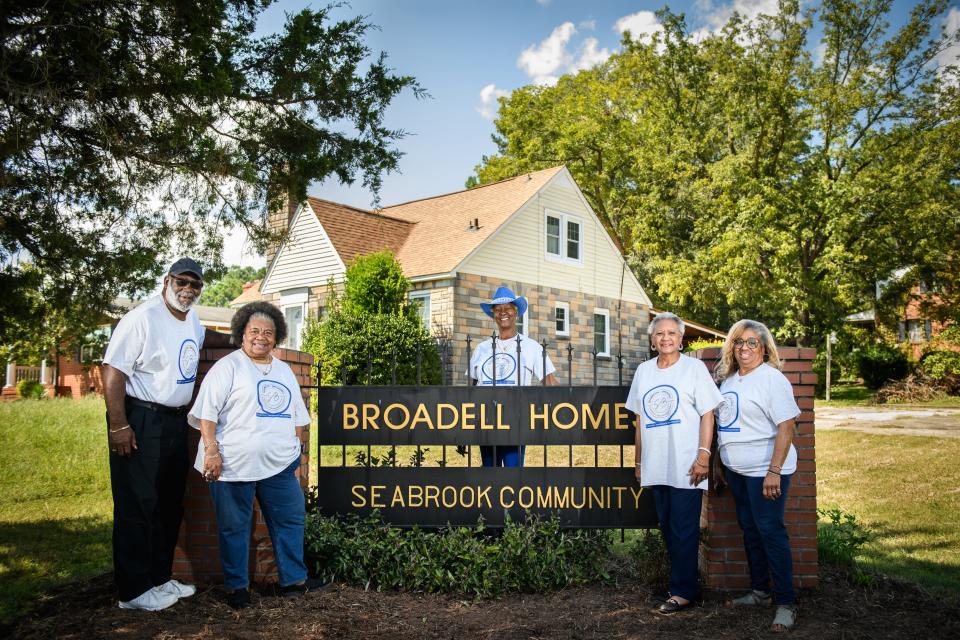
Fayetteville's living history
Thanks in large part to the efforts of Leeks and her community watch, architectural historians came this summer to survey older Broadell houses and other potential historical features. The team’s work will help guide the city and state in any future preservation efforts for the neighborhood.
The team is with the Kraemer Design Group, hired by the city and which has offices in Detroit; Toledo, Ohio; and Charleston, South Carolina. Team members led by architectural historian Cassandra Talley toured Broadell and conducted research, working with librarians and historians at Fayetteville State University and the Cumberland County Library, as well as conducting research at the State Archives.
As part of the survey, Leeks helped pull together some of the elders for Kraemer staff to conduct one-on-one interviews in the multipurpose room at Mt. Sinai Missionary Baptist Church. There were 18 interviewees in all, says Leeks, who described her role the day of the interviews as running around serving as host.
“It was a very successful day,” she says. “Our eldest person was 91.”
She also took Talley’s team to the old Orange Street School, which was built in 1915 and is now the site of a museum and community center.
“The reason I did that is because E.E. Smith is in the center of our community,” Leeks says of the school on Seabrook Road. “Orange Street School was the birth of E.E. Smith school.”
Community center comes to Orange Street: 'Instill confidence and bring cultural awareness:' 2 Fayetteville organizations start center to uplift community
When it comes to historical value, what does ‘preserve’ really mean?
The design group's work is funded by a $40,000 grant; $24,000 of the money comes from the North Carolina State Historic Preservation Office, and the city match is $16,000, according to Chris Cauley, who is the city’s director of economic and community development.
Cauley says the Kraemer Design Group will present its findings to the North Carolina National Register Advisory Committee.
“They will make a recommendations on whether anything needs to go on the National Register of Historic Places,” he said.
A state agency will decide if any Broadell sites or sections can go on the state or local historic designation, he said.
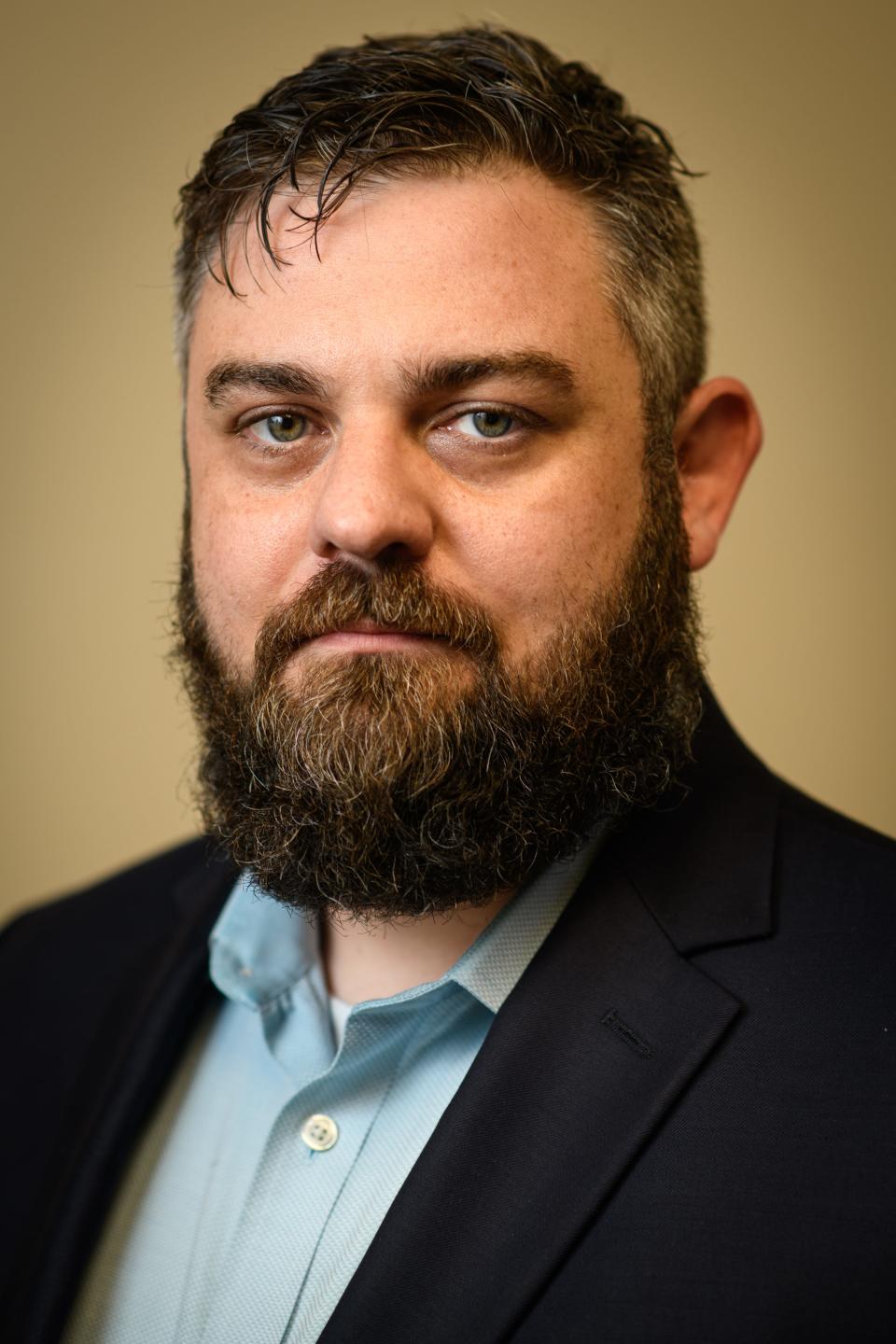
Properties on the National Historic Register, Cauley said, bring into play the city’s Historic Resources Commission along with restrictions related to development.
“From there it is up to (Fayetteville) City Council on what happens next,” Cauley said.
He said, based on his experience, he did not see the more restrictive historical designations as likely.
“A lot of the construction in that neighborhood does not go as far back as the history of the neighborhood,” he said. “Some stuff has been torn down and rebuilt over time. There may be some individual sites and structures they determine are contributing to history.”
He added: “It’s not just always about old; it could be about important persons.”
Even if Broadell does not get a federal or state historic designation, the Fayetteville City Council has several options it might pursue, he said, including signage, a resolution and other measures that note a location’s historical value.
“It kind of comes down to what does ‘preserve’ mean?” he says.
If the desire is to limit development to single-family homes, the neighborhood is already zoned to ensure that, he says.
If more protection is sought, it could place some limitations on owners of their properties, he says.
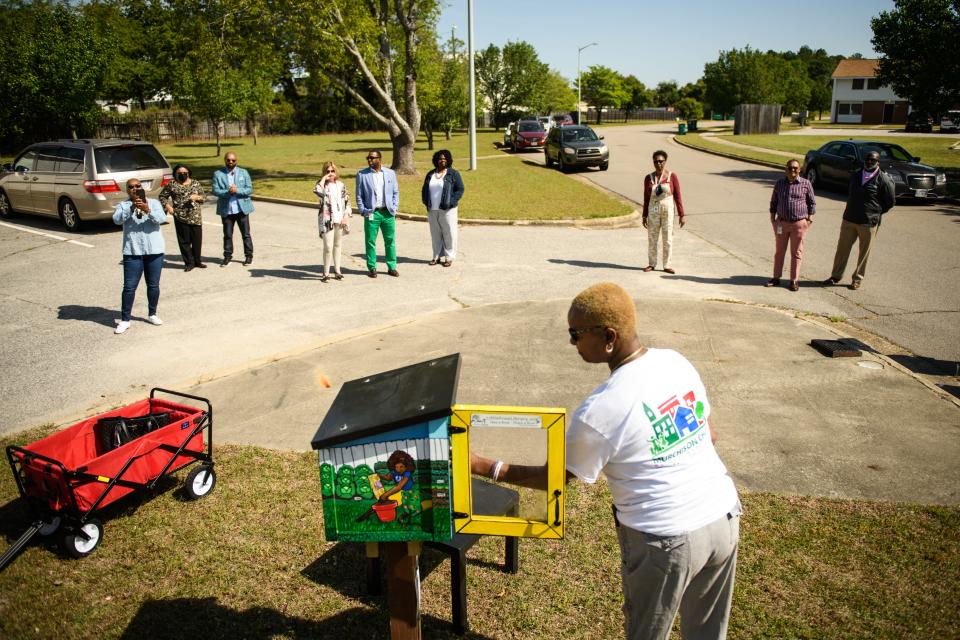
Historians describe ‘unbelievable’ first-hand accounts of civil rights era
Charles Broadfoot was the original developer of Holly Springs, which became “affectionately known as Broadell,” according to a community history in the city's application to the state’s Historic Preservation Fund. Broadell was developed in 1956, and some of the first owners were the Cone, McNair and Brown families, the history reads.
The Kraemer design team said in a statement that its survey team in Broadell looked for “historic buildings, structures, sites, and objects that still retain a high degree of historic integrity.
“The Seabrook-Broadell neighborhood is a fantastic collection of Mid-century Modern style houses set on large lots with mature trees and lush landscaping. As a neighborhood developed specifically for the Black middle class this place has an important story to tell about Fayetteville’s history.”
People such as the elders the team interviewed, “provide a finer level of detail than most other sources can provide,” the Kraemer statement said. “ For instance, by speaking with residents we gained insight into how people purchased their homes and how important E. E. Smith High School is to the community.”
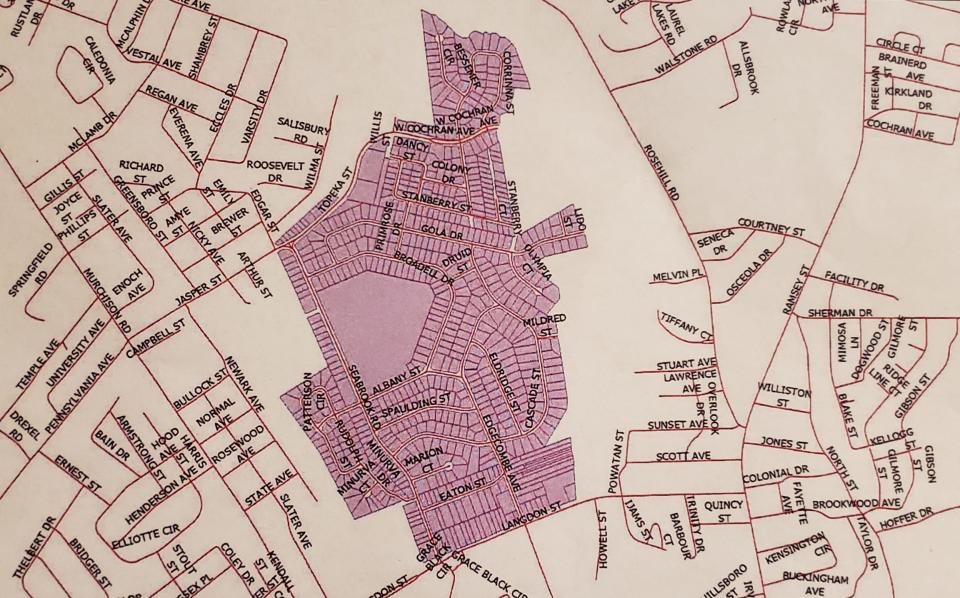
Team members say the interviews included standout moments.
“Getting firsthand accounts from people who lived through segregation or the sit in protests of the 1960s is unbelievable,” they said in the statement. “You are sitting across the table from someone who lived through one of the most important eras in modern history. As historians, that is profoundly important and its essential testimony for the work that we do.”
The Kraemer group noted the dedication and assistance of Nicholle Young St. Leone, with Fayetteville State’s archives; Leeks; Georgeanna Pinckney, president of Greater Life of Fayetteville; and Dr. Tamara Holmes Brothers, a historian and researcher.
“The dedication of people in the neighborhood to preserve their history and community also stood out to us,” the design group said in the statement.
The next stop on the African American Heritage Trail?
Leeks of the community watch says Broadell was a product of redlining — the racially discriminatory practice of steering African Americans into certain neighborhoods and away from others. She wants that story remembered but also the story of resilience and excellence told in the lives of many people from the neighborhood who became leaders in the community and city.
Leeks credits Dr. Brothers and her unofficial study on Broadell for sparking increased interest in the area's historical roots. Brothers published the study in 2010 as a graduate student at UNC-Greensboro and while she was working as a fundraiser at FSU. She created a video on Broadell that resides in the archives of Fayetteville State University and the Local & State History room at the downtown county library.
She is currently the Diversity, Equity, Accessibility and Inclusion manager at the NC Department of Natural & Cultural Resources, and vice chair of the NC African American Heritage Commission.
Brothers said the study is the first step toward nominating a property for historical recognition by the North Carolina State Historic Preservation Office.
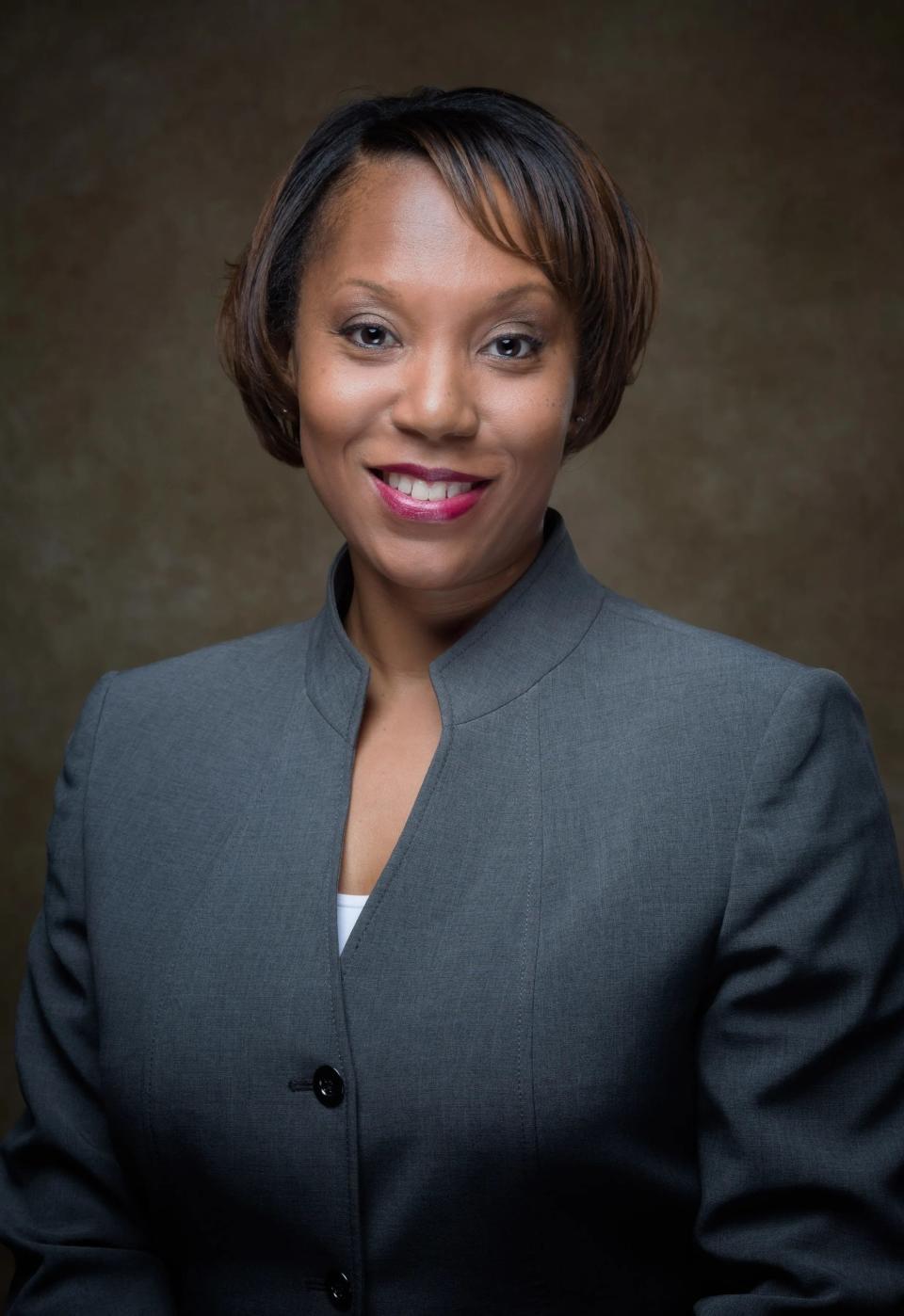
Brothers, a third-generation graduate of E.E. Smith, describes her work in Broadell as a calling. She said she is inspired by words she heard several years ago from her late aunt, Dr. Beverly D. Miller, a Fayetteville State professor. At the time, Miller was working on her doctoral degree, a study of the Chesnutt sisters — They were influential, African-American educators who hailed from one of Cumberland County's foremost families.
“Before she passed, she told me I would be the one to carry the torch,” Brothers says.
Leeks made sure information from Brothers’ research was added to the grant application to the Historic Preservation Office.
“Based on her study, her findings, she interviewed several people in the community … It actually started with her.”
When it comes to preserving the Broadell story, Leeks says she and her neighbors have one very specific wish: That the neighborhood is a stop on the African-American Heritage Trail, which is made up of sites in Fayetteville and Cumberland County that chronicle the Black experience.
The overall goal for the Seabrook-Broadell Community Watch is to preserve the story of the village.
“That is our hope,” Leeks says.
Myron B. Pitts can be reached at mpitts@fayobserver.com or 910-486-3559.
This article originally appeared on The Fayetteville Observer: Fayetteville neighbors want to save area's Black history. Here's how

